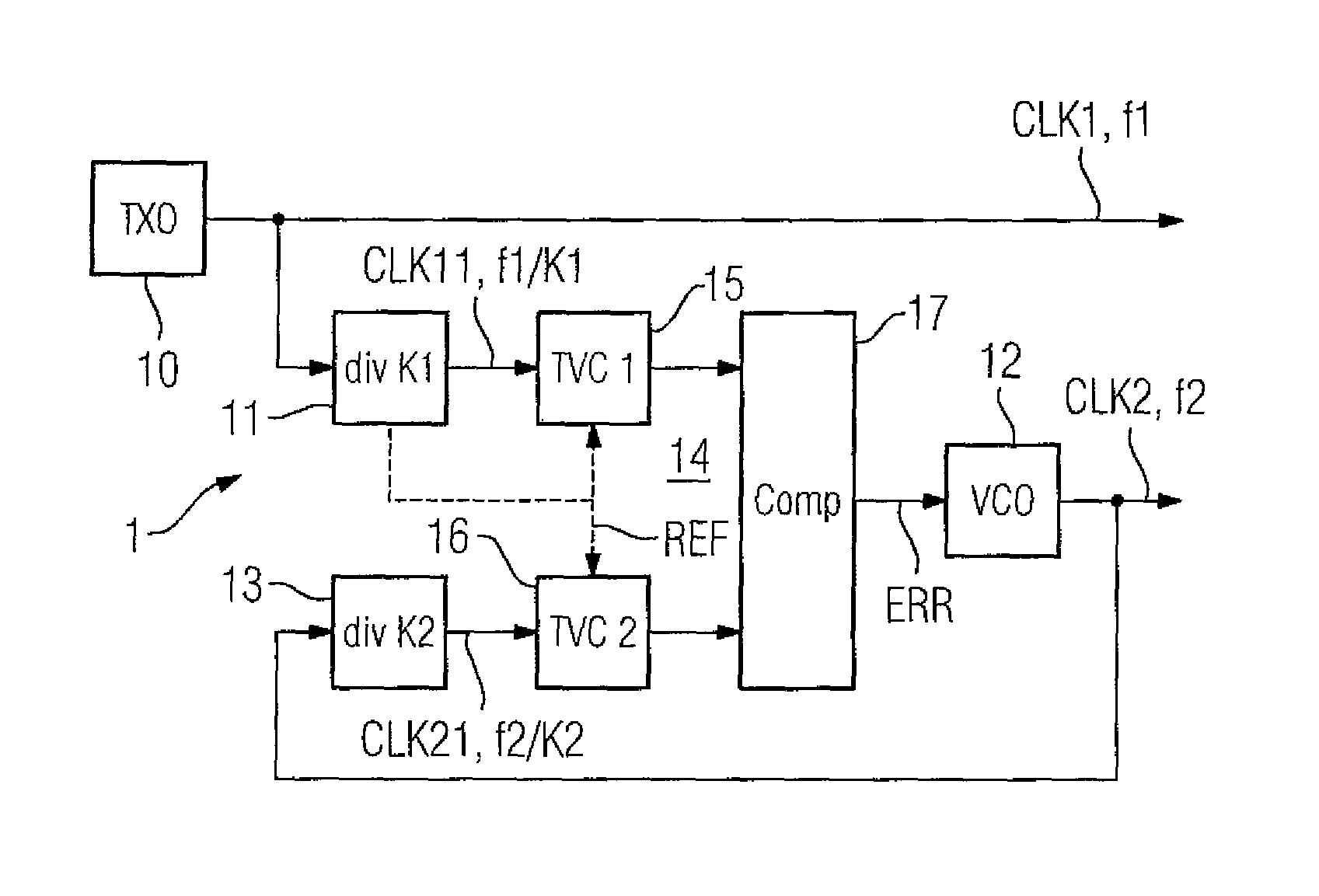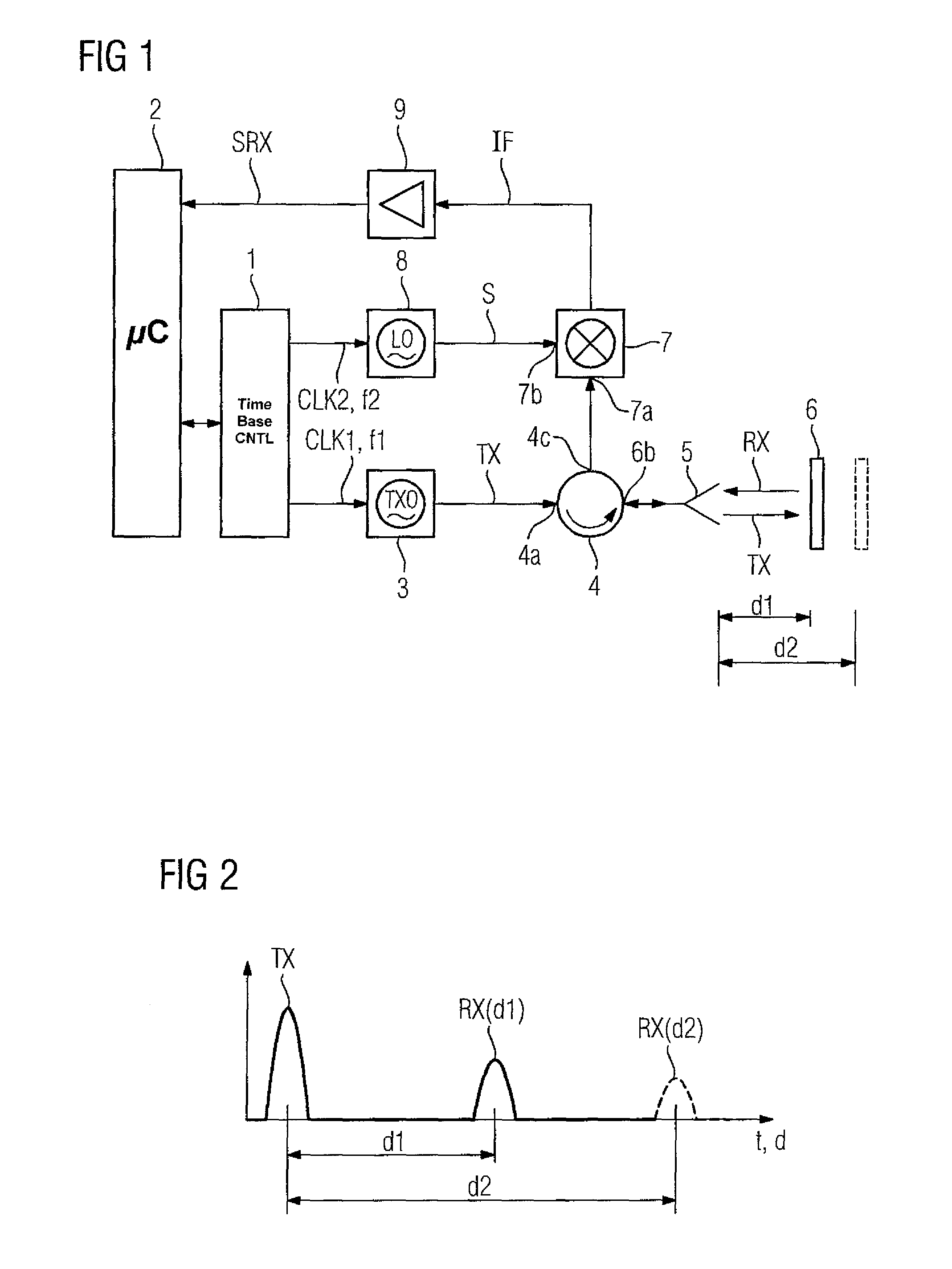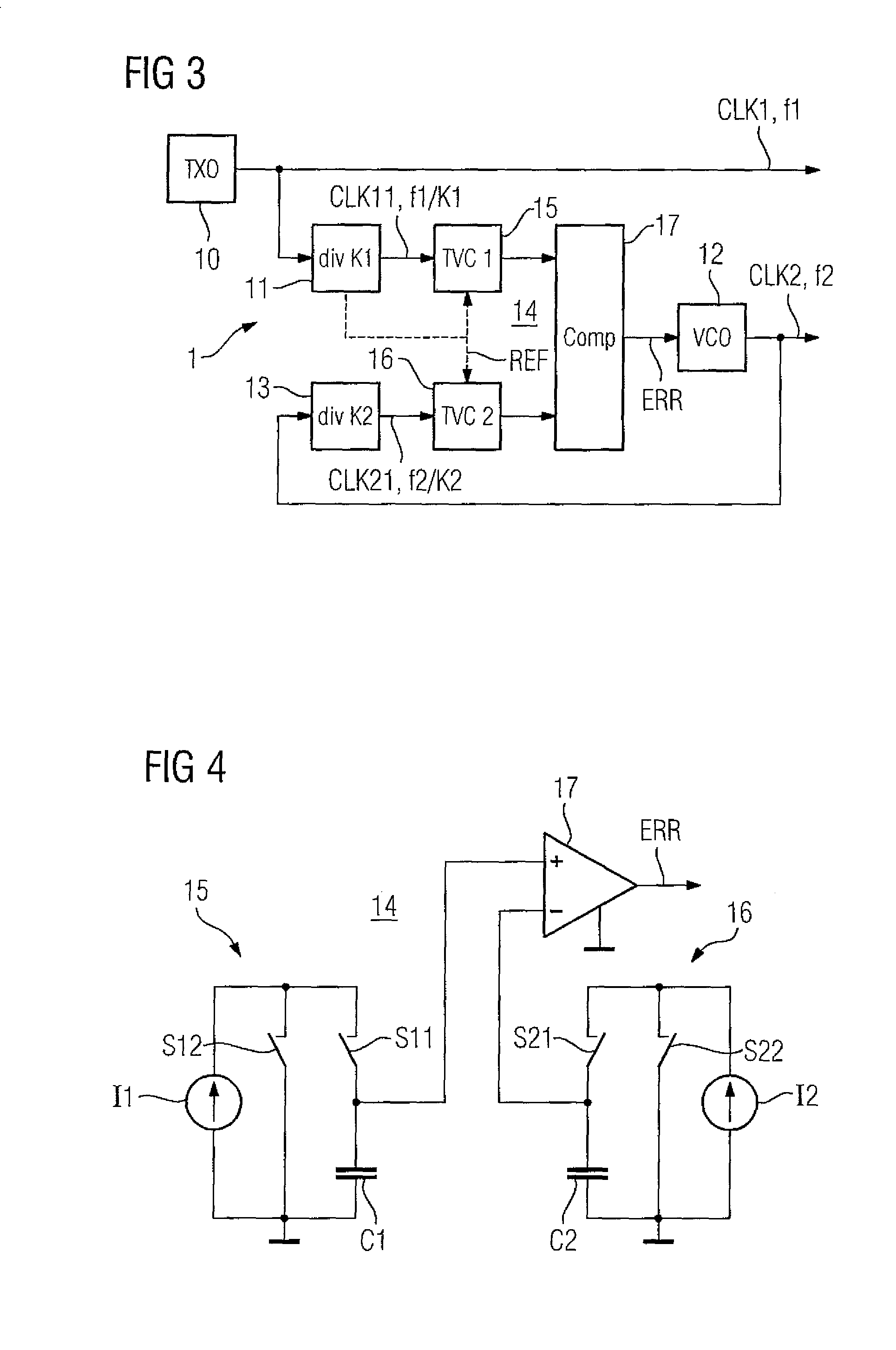Time base generator and method for providing a first clock signal and a second clock signal
a time base and clock signal technology, applied in the field of control systems, can solve the problems of amplitude fluctuations and even cancellations, intermediate frequency signals suffer distortions, and the phase difference between clock signals is not predictable, and the time base jitter must be maintained low
- Summary
- Abstract
- Description
- Claims
- Application Information
AI Technical Summary
Benefits of technology
Problems solved by technology
Method used
Image
Examples
first embodiment
[0031]In a first embodiment, the time-to-voltage converters 15 and 16 generate a voltage proportional to the cycle durations of the respective first and second auxiliary signals CLK11, CLK21. Thus, for example, switch S11 is closed and switch S12 is open when and as long as the first auxiliary signal CLK11 is high so that the voltage over capacitor C1 linearly increases with time. When the first auxiliary signal CLK11 drops to a low level, switch S11 is opened and switch S12 is closed so that the capacitor C1 holds the voltage. After a hold time, switch S11 is closed to discharge capacitor C1. The second time-to-voltage converter 16 works equally for the second auxiliary signal CLK21, however, the detected cycle durations of the first and second auxiliary signals CLK11, CLK21 are differently weighted. The different weighting may be achieved in that the constant current sources 11, 12 provide different currents, the capacitors C1, C2 have different capacities and / or the voltage compa...
second embodiment
[0034]In a second embodiment, the phasing of the first and second auxiliary signals CLK11 and CLK21 is used to control the voltage-controlled oscillator 12. The time to voltage conversion can be started simultaneously for both time-to-voltage converters 15, 16 at an arbitrary reference moment by a reference signal REF related to the first clock signal CLK1 and stopped independently at the rising (or falling) edge of the first auxiliary signal CLK11 for the first time-to-voltage converter 15 and at the rising (or falling) edge of the second auxiliary signal CLK21 for the second time-to-voltage converter 16. The position of the rising (or falling) edge of the second auxiliary signal CLK21 in relation with the rising (or falling) edge of the first auxiliary signal CLK11 is adjusted and maintained by individually weighting and comparing the voltages from the time-to-voltage converters 15 and 16 and controlling the voltage-controlled oscillator 12. The edges of the auxiliary signals CLK1...
PUM
 Login to View More
Login to View More Abstract
Description
Claims
Application Information
 Login to View More
Login to View More - R&D
- Intellectual Property
- Life Sciences
- Materials
- Tech Scout
- Unparalleled Data Quality
- Higher Quality Content
- 60% Fewer Hallucinations
Browse by: Latest US Patents, China's latest patents, Technical Efficacy Thesaurus, Application Domain, Technology Topic, Popular Technical Reports.
© 2025 PatSnap. All rights reserved.Legal|Privacy policy|Modern Slavery Act Transparency Statement|Sitemap|About US| Contact US: help@patsnap.com



